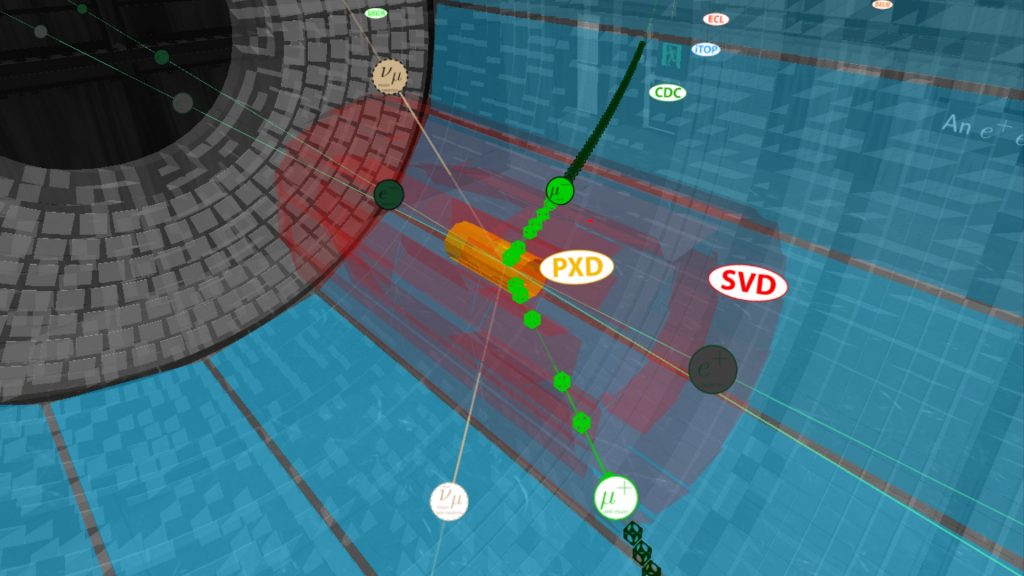Belle II explores new “portal” into dark matter – first results from the Belle II Experiment

The Belle II experiment—an international collaboration of physicists searching for signs of undiscovered particles—has published the experiment’s first results in a paper selected as an Editors’ Suggestion in Physical Review Letters. The results offer physicists new clues in their hunt for dark matter, a substance believed to make up some 85% of the universe.
The Belle II experiment, which operates at the SuperKEKB electron-positron collider in Tsukuba, Japan, searched for a hypothetical new particle called the Z’ that may act as a “portal” between ordinary matter and dark matter. Belle II finds that the data collected in 2018 shows no evidence of the Z’, and sets new limits on the properties of such a particle.
KMI members play leading roles in various aspects of the Belle II Experiment. Prof. Iijima as the spokesperson of Belle II Collaboration, Associate prof. Alessandro Gaz as the Physics Coordinator, Associate prof. Kodai Matsuoka, Assistant prof. Yuji Kato, and Assistant prof. Qidong Zhou are actively involved in the project.
The paper demonstrates that the Belle II experiment can explore dark matter in the region not covered by other experiments.
We are just at the entrance of this exploration, and further accumulation of data will enables us to provide more significant result.
We just need more data! (Prof. Toru Iijima)
It is really remarkable that with the tiny data set that the experiment collected in 2018, Belle II is already able to obtain interesting results on the search for the nature of Dark Matter. Of course this is just an appetizer: many more exciting results, using bigger samples and more refined analysis techniques, will come in the next months. (Prof. Alessandro Gaz)
Learn more at KEK’s web release:
https://www.kek.jp/en/newsroom/2020/04/07/0000/
Paper Information
“Search for Search for an Invisibly Decaying Z’Boson at Belle II in e+ e−→μ+μ−(e±μ∓)Plus Missing Energy Final States”
https://journals.aps.org/prl/abstract/10.1103/PhysRevLett.124.141801
Related articles
https://www.kmi.nagoya-u.ac.jp/eng/blog/tag/belle-ii-experiment/



